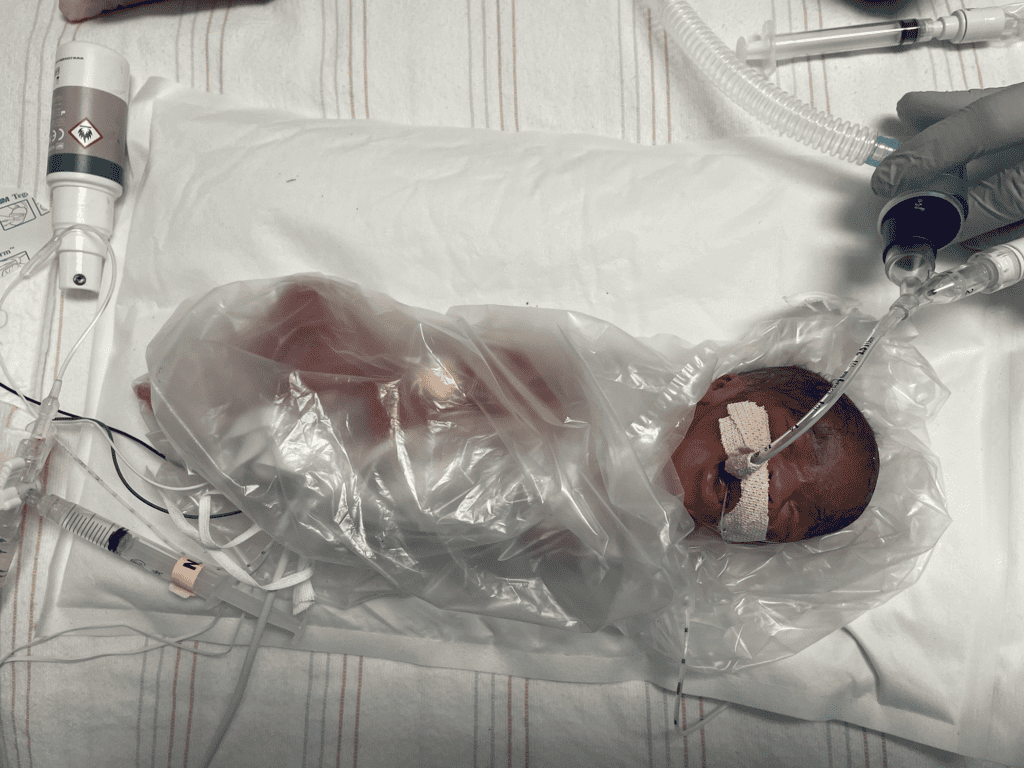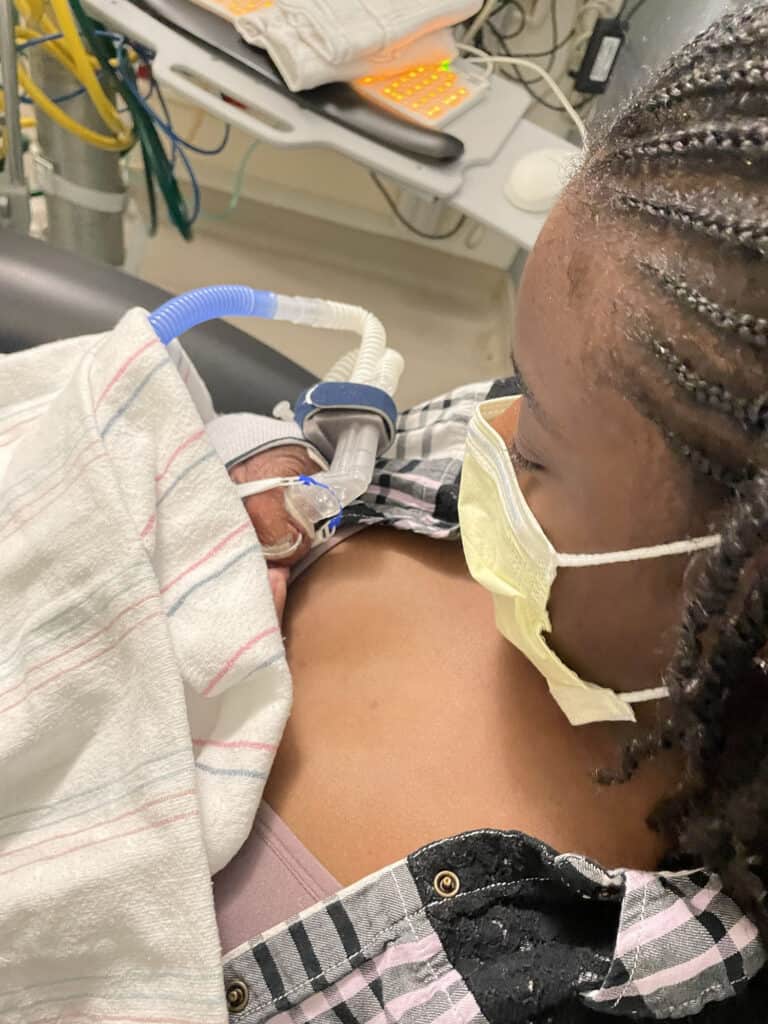By Karen E. Butler, Director of Communications

Janae Dingaoyo, 27, and her husband, Jon, were overjoyed when in July 2023 they learned Janae was pregnant. The pair had married just a month prior and were already on cloud nine. Just six weeks later at Janae’s first ultrasound, their joy multiplied.
“As soon as my doctor put the transducer on my belly, I looked at the monitor and saw two big sacks,” recounted Janae who lives with her husband in Burlington, North Carolina. “I just kept looking at the screen. My husband stared at it, too. Neither of us could say anything. Finally, after moments of silence, I looked at my doctor and asked, ‘Are we having twins?’”
Like so many women, Janae’s first trimester was defined by nausea. Although some days proved challenging, Janae continued working in her role as a staff accountant at Andersen Sterilizers in Haw River, North Carolina. At about her 12th week of pregnancy, she began to feel better and reenergized for the journey ahead carrying two babies.
However, one day in December Janae shared with her supervisor, Bridgette Yaeger, some peculiarities in her pregnancy and asked if what she was experiencing was normal. She was just 22 weeks pregnant. Alarmed at what she was hearing, Bridgette advised Janae to call her doctor. Janae was instructed to go immediately to labor and delivery at Alamance Regional Medical Center (ARMC). Bridgette drove Janae to the hospital and remained at her side. After an examination, the doctor told the pair that Janae was dilated four centimeters and about to go into labor.
Realizing they were not equipped to support two premature babies should Janae give birth early, doctors at ARMC had her airlifted to Duke University Hospital. On the way there she began having contractions.

“Hearing the whir of the helicopter rotor blades elevated my stress which seemed to increase the frequency of my contractions; they were two minutes apart,” Janae said. “I prayed, ‘Please don’t let me have these babies today.’”
As soon as she arrived, Janae’s medical team had her lie flat on her back. She was not to sit up or even prop herself up. They counseled the couple, explaining to them what it would mean to have a baby at 22 weeks, the survival rate statistics and their options.
“They told us that if these babies are born now, they wouldn’t have a good chance of surviving,” said Janae, who learned that she had been diagnosed with an incompetent cervix, making it nearly impossible for her to carry a baby to term without intervention. “They explained that every additional day that the twins remained in the womb their chances of surviving increased. I was an emotional wreck.”
Janae’s medical specialists were able to slow and eventually stop her contractions with medication. However, she would remain flat on her back in bed at the hospital for the remainder of her pregnancy. The days moved by slowly, but Janae and Jon were glad for every day the babies remained in their mother’s womb. But 11 days after being admitted, Janae suddenly felt Baby A (Akenji) turn from a head-down position to a feet-down position.

“I felt his legs slip through my cervix,” shared Janae. “Astonished, I could feel those little legs kicking in the birth canal.”
Janae was 23 weeks and five days along. She was wheeled to the delivery room where she was told that because one of the babies was breech, she would undergo a cesarean section delivery. Despite Jon nearly losing consciousness as her medical team readied for the procedure, the delivery seemed to go well. Janae was only able to get a quick glimpse of one of her babies before nurses rushed both infants out of the delivery room and straight to the NICU.
“I found out later that at one point Baby B (Asanti) had to be resuscitated as he wasn’t breathing,” Janae said.
Surprisingly, the babies—both weighing just over a pound—remained stable throughout the night and into the days ahead. There were “rough patches” in which the boys struggled at times. The couple’s sons, Asanti, means “thank you” and Akenji, means “he gives light to everything he touches“, continue overcoming obstacles to thrive. Born December 26, 2023, the twins are expected to go home in late April—if all goes well.
Janae returned to work in early February. She and Jon visit their infants every day, encouraged by their sons’ tenacity and also by the remarkable skill and expertise of all those at Duke caring for their sons. The boys, almost three pounds, are achieving their milestones; both are now breathing on their own. Janae and Jon can even coax smiles from the boys. Still, there are many unknowns and only time will tell.

“We can’t wait to bring our boys home,” said Janae. “We’re very grateful to everyone at Duke for all they’ve done to ensure their survival. I’m also thankful for my Andersen colleagues, especially Bridgette. I call her my work mom. I know she’s always there for me. I can go to her and ask just about anything, and I can count on her for sound guidance. I just don’t think I would have gone to the hospital that day in December if it hadn’t been for Bridgette. Her help getting me to the hospital, staying at my side and her help in managing my emotions—well, that was a game-changer.”
Janae said that she and Bridgette talk about that day all the time, still amazed at how it played out. As she anticipates her sons coming home, Andersen continues to work and collaborate with her to ensure continued success at both work and at home.
“Andersen embraces a culture of respect and assistance; we care about everyone,” said R. Scott Krewson, General Manager and Chief Financial Officer. “We’re glad we could assist Janae when she unexpectedly experienced premature delivery. We always stand by and support staff in time of need. We look forward to when Janae’s twins are released from the hospital, and they come home for good.”
